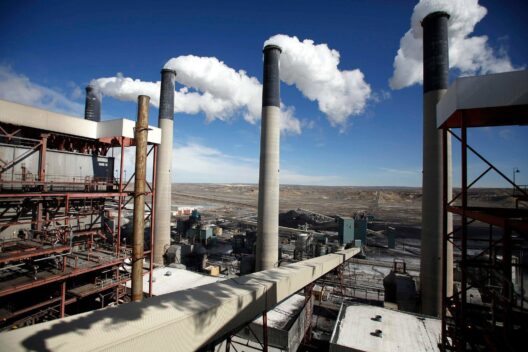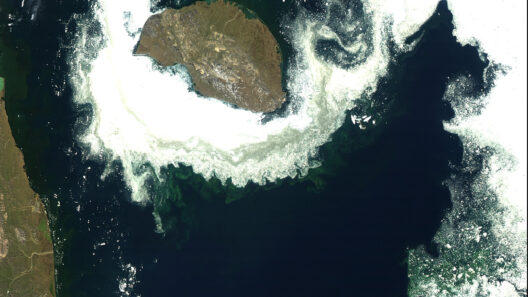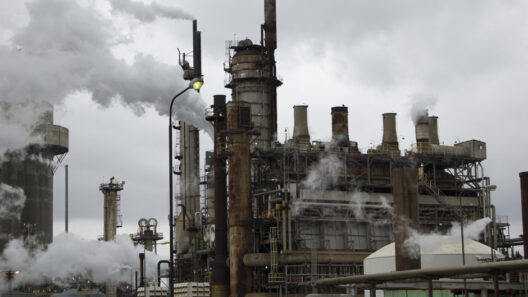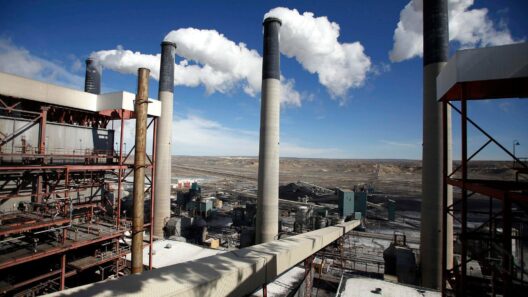The interplay between hazardous waste and global warming is a complex and often overlooked aspect of the climate crisis. As environmental degradation continues to exacerbate the effects of climate change, the remnants of outdated industrial practices—leftover hazardous materials—pose a dual threat to ecological stability and human health. This article explores the toxic legacy of hazardous waste and its contributions to global warming, while advocating for a transformative shift in our understanding of these issues.
Industrialization precipitated great economic advancement, yet it also engendered a legacy of toxic waste. Sites worldwide, often abandoned and neglected, are laden with hazardous materials that can seep into the environment, adversely affecting ecosystems. These sites, known as brownfields, serve as a stark reminder of our industrial past and represent a critical failure in foresight. The damage they inflict can endure for decades or longer, making remediation a complex, sometimes Sisyphean task.
Hazardous waste encompasses a plethora of materials, including heavy metals, solvents, pesticides, and various byproducts of industrial processes. Many of these substances are not only detrimental to local ecosystems but also contribute to the increasing concentration of greenhouse gases (GHGs) in the atmosphere. As these materials degrade, they can emit potent GHGs, including methane and carbon dioxide, which are significant contributors to global warming.
One might wonder: how does hazardous waste contribute to climate change? The answer lies primarily in the waste management practices employed by industries around the globe. Decomposed organic waste, for example, often ends up in landfills, where it undergoes anaerobic decomposition, producing methane—a GHG with a global warming potential over 25 times greater than carbon dioxide over a 100-year period. This process not only exacerbates climate change but also poses risks to groundwater and air quality, underscoring the interconnectedness of environmental issues.
Moreover, hazardous waste can permeate soil and contaminate local water sources. Contaminated water is a hidden foe in the battle against climate change. Polluted waters influence local populations through the food chain, reducing biodiversity and, in turn, disrupting critical ecosystem functions. Aquatic life can be tragically diminished, leading to destabilized habitats that are less resilient to changing climates. The precarious balance between environmental health and climate stability becomes ever more tenuous as hazardous materials infiltrate our ecosystems.
An often-heard refrain is that our approach to hazardous waste management must evolve. Remediation technologies, such as bioremediation and phytoremediation, offer glimmers of hope. These methods utilize natural microbial or plant processes to detoxify contaminated environments, thereby reintroducing them to ecological health. Such novel techniques not only clean up hazardous waste but also serve as an avenue to sequester carbon, a crucial element in combating global warming.
Additionally, the circular economy paradigm provides an innovative framework for addressing hazardous waste. By emphasizing recycling and resource recovery, industries can minimize the generation of hazardous byproducts in the first place. This proactive approach not only helps mitigate climate change but also fosters a culture of sustainability that encourages the responsible use of resources. Transformation in industry practices, driven by the demand for better waste management, can substantially diminish the impacts of hazardous waste on our climate.
The potential impacts of climate change on hazardous waste sites are also alarming. As temperatures rise and permafrost thaws, once-stable waste disposal sites may become unstable. This phenomenon is particularly concerning in Arctic regions, where Cold War-era hazardous materials were stockpiled and often irresponsibly disposed of. The warming climate may catalyze the release of dangerous contaminants, creating a feedback loop that exacerbates global warming while simultaneously jeopardizing human health and safety.
Addressing the toxic legacy of hazardous waste is imperative not only for environmental reasons but also for social equity. The most vulnerable communities, often situated near these waste sites, bear the brunt of the adverse effects. Prolonged exposure to hazardous substances can lead to a plethora of health issues, exacerbating existing inequalities. As we confront climate change, it is crucial that we advocate for those disproportionately affected by environmental degradation, ensuring that policies prioritize justice alongside rehabilitation efforts.
In light of these pressing challenges, it is essential to engage in holistic and innovative approaches to hazardous waste management. Public awareness campaigns can galvanize grassroots movements, encouraging communities to take action in their localities. Improved regulatory frameworks can hold corporations accountable for their waste outputs, incentivizing sustainable practices that contribute to climate resilience. Furthermore, investing in scientific research can advance our understanding of hazardous waste and its long-term implications on climate change, guiding effective policy formation.
In conclusion, the relationship between hazardous waste and global warming is intricate and deeply interconnected. A fundamental shift in our perspective—recognizing that hazardous waste is not merely a localized concern but a global challenge—is essential if we are to navigate the perilous waters of climate change. As we transition toward a sustainable future, we must transform our toxic legacy into an opportunity for regeneration. Each action taken today can reverberate for generations, paving the way for a healthier planet.








